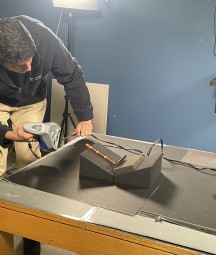by Felix M. Larkin, Vice-chair of the NLI Society and member of the NLI’s Readers Advisory Committee. His essay on 'Ulysses and the Freeman’s Journal' is included in the forthcoming volume of the Dublin James Joyce Journal (No. 4, 2011)
The short story ‘The Dead’ is one of Joyce’s best-known and much-loved works. He wrote it in Rome and Trieste between 1906 and 1907, and his biographer Richard Ellmann has described it as ‘his first song of exile’. According to Ellmann, one of Joyce’s avowed purposes in writing the story was to celebrate Dublin’s spirit of hospitality – and it certainly does that. One of the best things in the story is the description of the fare which has been provided by Gabriel’s aunts for the party, and I love Joyce’s characterization of those two old ladies: ‘Though their life was modest, they believed in eating well’ – an apt prescription for good living.
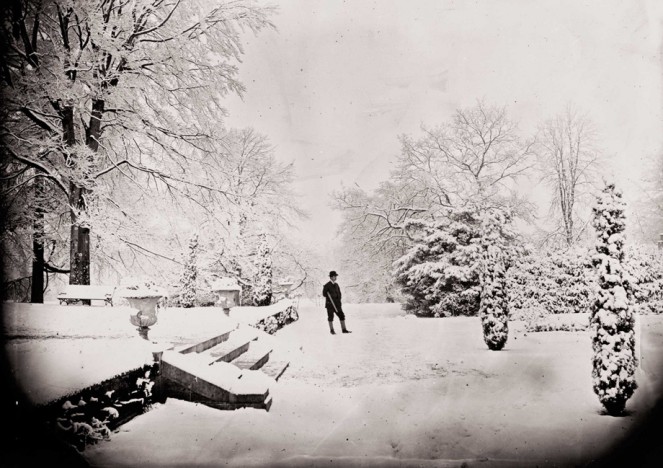
"... snow was general all over Ireland." It certainly was in the photograph taken on 10 December 1870 in the grounds of Clonbrock House, Ahascragh, Galway.
It is also a Christmas story – our Irish Christmas story, just as the English have Dickens’ A Christmas Carol and the Welsh have Dylan Thomas’ A Child’s Christmas in Wales. Miss O’Callaghan’s assertion in the story that ‘Christmas is never really Christmas unless we have the snow on the ground’ certainly resonates with all of us who experienced the weather we had in Ireland at Christmastime 2010.
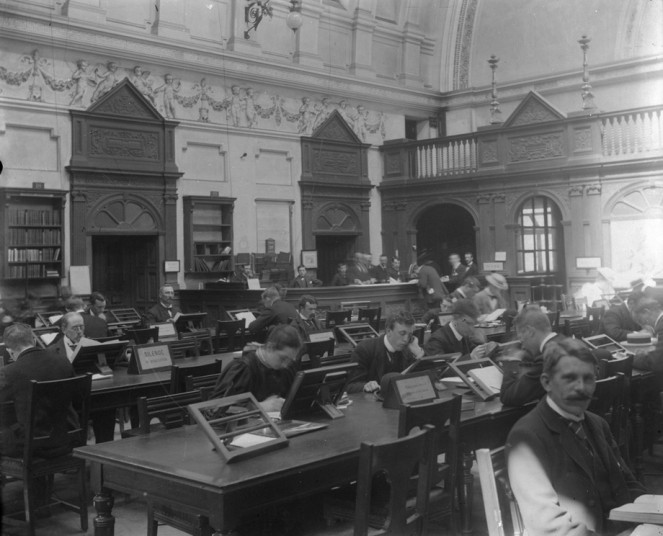
James Joyce was a familiar figure in the Reading Room here at the National Library of Ireland.
Most of all, however, ‘The Dead’ pays homage to the people of Dublin. Joyce’s overwhelming concern was with the people of the city – ‘all these here [who] once walked round Dublin’, to quote from Ulysses. In this respect, ‘The Dead’ prefigures Ulysses. Joyce was not just content to capture archetypal Dubliners; there are real people in the story. Ellmann tells us that Gabriel Conroy is based largely on Constantine P. Curran, the art critic who was Joyce’s contemporary at University College Dublin – and Miss Ivors, the acerbic Irish language enthusiast, is a portrait of one of the daughters of David Sheehy MP whose wife features in Ulysses in conversation with Fr Conmee of Belvedere College. Miss Ivors is, in fact, Kathleen Sheehy – who later married another of Joyce’s UCD contemporaries, Frank Cruise O’Brien, and was the mother of Conor.
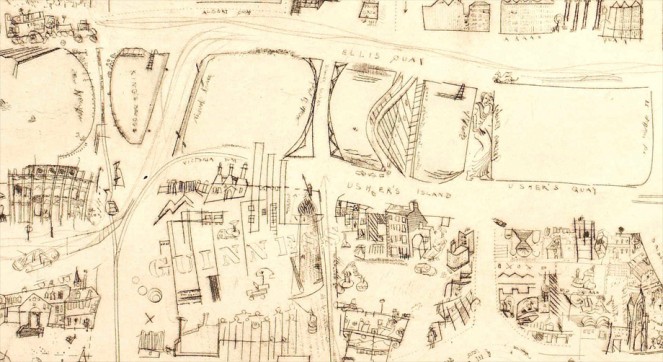
Usher's Island - a detail from 'In Medias Res' by David Lilburn - commissioned for the exhibition 'James Joyce and Ulysses at the National Library of Ireland'
Joyce knew the Sheehy family well. Their home at Belvedere Place, in Dublin’s north inner city, hosted many parties of the kind featured in ‘The Dead’ – though ‘The Dead’ is set not in Belvedere Place or its environs, but in a house on Usher’s Island. Joyce would undoubtedly have attended those parties and others like them.
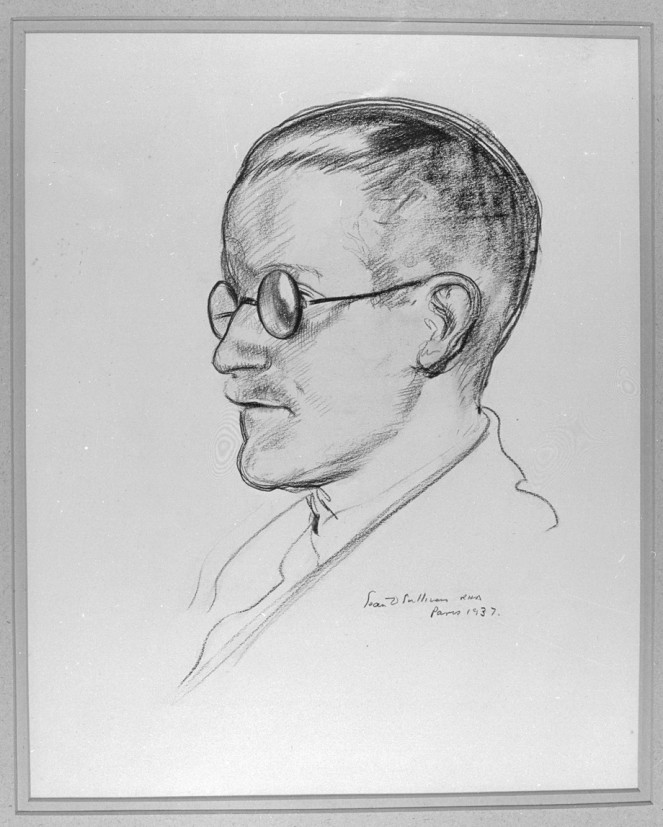
James Joyce by Seán O'Sullivan, RHA
Probably the best known of the Sheehy girls today is Hanna, who was active in the early feminist movement in Ireland and married Frank Skeffington – also a contemporary of Joyce’s in UCD. Another sister, Mary, married Tom Kettle – the great young hope of the Irish Parliamentary Party before his untimely death in the Battle of the Somme in 1916. Joyce was, at one time, in love with Mary Sheehy – and maybe his great regret at failing to win her hand colours the emotions unleashed at the end of ‘The Dead’ when it is revealed that Gabriel’s wife, Gretta, still pines for her lost suitor of long ago in Co. Galway.
Joyce’s wife Nora Barnacle, who actually came from Co. Galway, also had a failed love affair before coming to Dublin – and the facts of that courtship correspond closely to the story of Gretta Conroy and Michael Furey. So, James Joyce and Nora Barnacle both had reason to empathise with Gretta’s sorrow about her lost love – the love of her life – and with Gabriel’s great disappointment, indeed his devastation, when he finds out about Michael Furey and the hold that he still has on Gretta’s imagination.

O'Connell Street (formerly Sackville Street) and its monuments - a detail from 'In Medias Res' by David Lilburn - commissioned for the exhibition 'James Joyce and Ulysses at the National Library of Ireland'
We are left at the end with a sense of possibilities denied, opportunities not realised, roads not taken. That surely is the key to the story’s timeless appeal.
One of the lighter moments in ‘The Dead’ is when the cab carrying Gabriel and Gretta back to their hotel after the party passes Daniel O’Connell’s statue, and Gabriel waves his hand and says ‘Good night, Dan’. This reminds me that, when I was in primary school about fifty years ago, I was taught a very clever way of remembering all the monuments in O’Connell Street by reference to water. It is one of the few things from my schooldays that I have never forgotten. Nelson’s Pillar was still there then, and the statue of my namesake – Jim Larkin – had not yet been put in place.
This is how the mnemonic goes: Daniel O’Connell is looking into the water; William Smith O’Brien was transported across water; Sir John Gray brought water to Dublin; Horatio Nelson fought all his battles on water; Fr Mathew wants us to drink nothing but water; and Charles Stewart Parnell got into hot water. I think the iconoclastic James Joyce might have enjoyed that.
